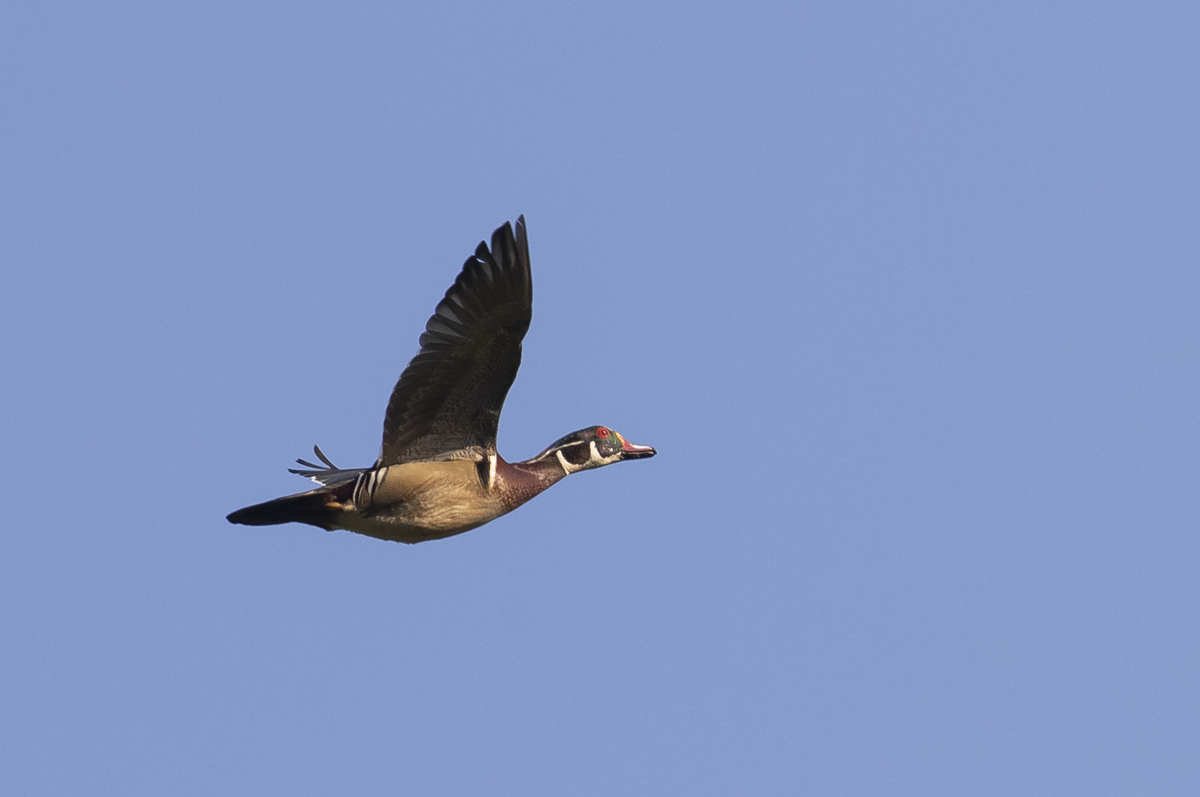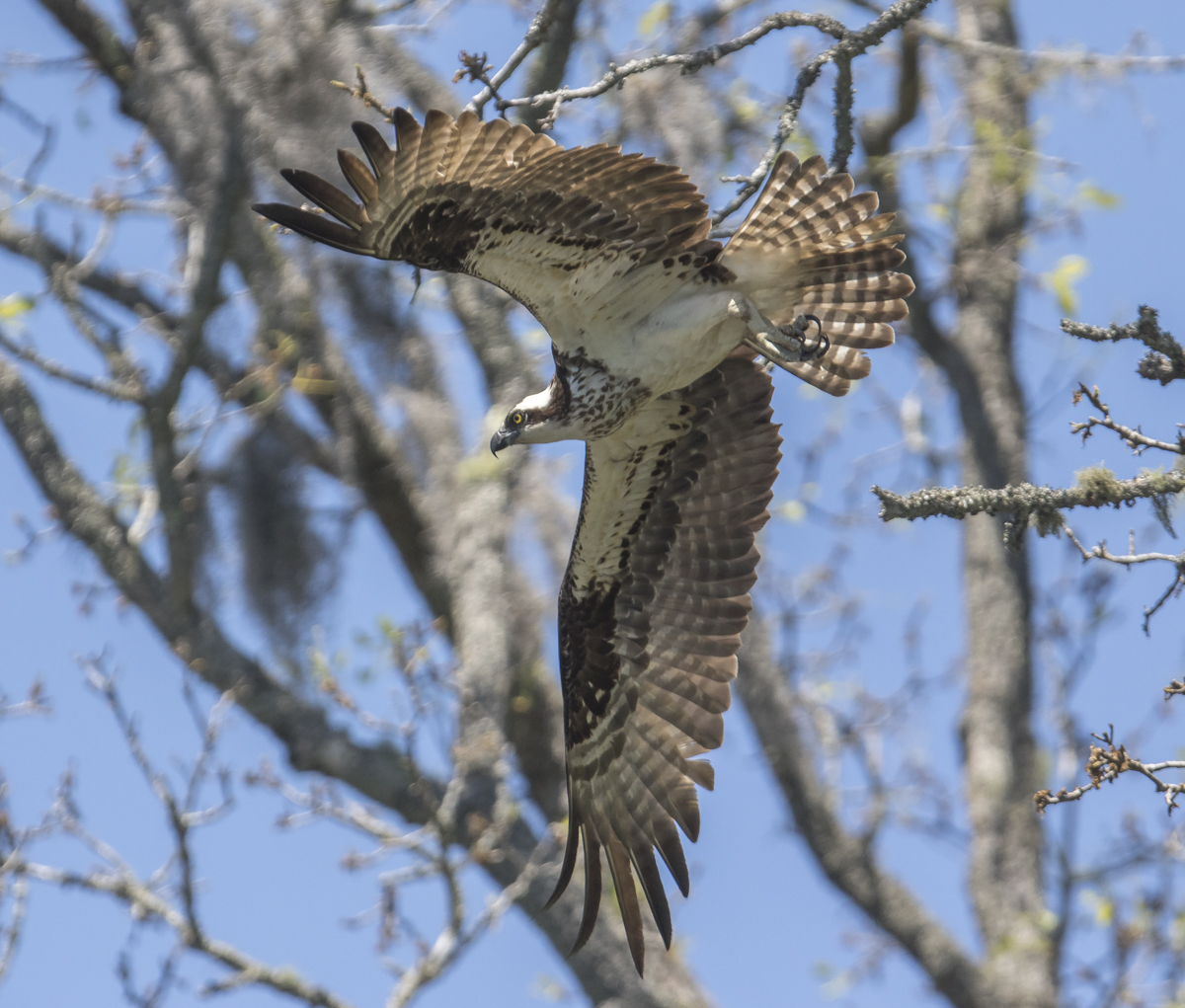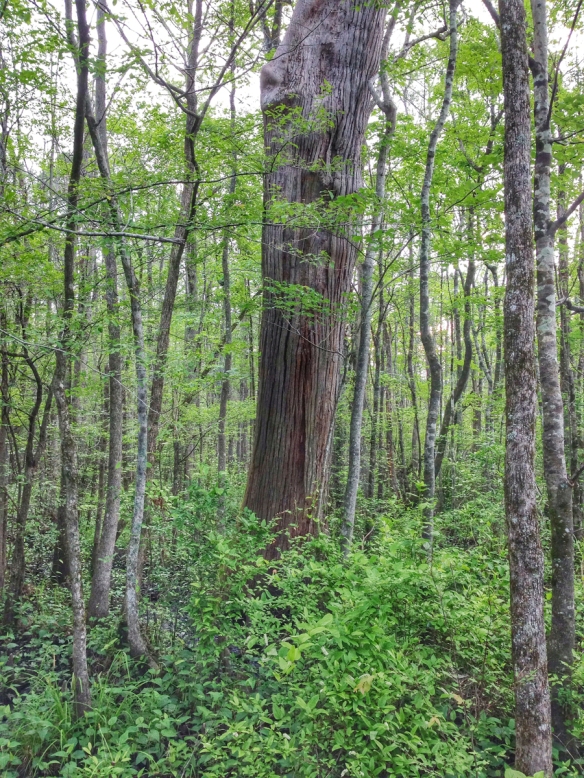The way of a canoe is the way of the wilderness, and of a freedom almost forgotten.
~Sigurd F. Olson
The Swamp Queen (aka Melissa) did it again…planned a canoe/camping adventure to our favorite swamp destination, the Roanoke River. So, last week, we headed east to spend a planned 6 days paddling over 50 miles on the Roanoke and Cashie (pronounced cash-EYE) Rivers and staying at a number of the wonderful platforms managed by the Roanoke River Partners (RRP) organization. We planned to include two platforms that neither of us had camped on – Conine and Lost Boat (there’s no need to worry about that name, right?). The timing of our trip was perfect as April is our favorite month to paddle this swamp – the bright green colors of spring and the arrival of migratory birds are a huge plus (as is the general lack of mosquitoes this early in the season). And it coincided with my article in the April issue of Walter Magazine highlighting the natural wonders of paddling this area. Check it out for more information on this region.
Weather conditions changed during our trip so we made some alterations in our plans and took out a day early before the heavy rains hit. Below is a rough map of our paddle from Williamston to Windsor. With the changes in platform destinations (we called from the river and changed our reservations as you need to reserve platforms in advance), we ended up paddling a little over 46 miles in four and a half days and stayed on four platforms – Conine, Barred Owl Roost, Cypress Cathedral, and Lost Boat.

-A rough map showing our route from Williamston to Windsor (just off the map at the top) with the names of the platforms where we camped and showing the Thoroughfare connector between the Roanoke River (in red) and the Cashie (in blue)
A satellite view shows a huge swath of green along the river corridors between Wiliamston and Windsor. Mush of this land is protected by the Nature Conservancy, the Roanoke River National Wildlife Refuge, and various hunt clubs. But some of our trip took us by through shorelines that are not protected and have been recently clear-cut, leaving only the required 30 foot buffer along the waterway. I just don’t think a 30 foot buffer is adequate to protect the integrity and beauty of these amazing habitats. Thank goodness various groups have managed to protect some large sections of the swamp forests.

-A Google Earth view of the rivers we paddled showing the vast expanse of bottomland forest
This post will cover some of the highlights of the Roanoke River portion of our trip. Next time, I’ll finish the trip up the Cashie to Windsor. I want to thank Travis, a teacher that Melissa knows through some of the museum workshops, for helping us shuttle our vehicle between our put in and take out points.

-We set off from Williamston with a fully loaded canoe

-Water levels were as low as we have seen them and when we arrived at the first camping platform, it was a big distance from the river to the newly renovated dock. The steep muddy bank made for a challenging unloading experience. After hearing of our experience, RRP plans to add a lower dock section.

-RRP is renovating many of the camping platforms. This is the refurbished Conine platform – it is really beautiful and one of the few with a screened structure. The walls on the right are the toilet enclosure (but you must bring your own private latrine for these outings – more on that later)

-The first day we were serenaded by countless warblers that had recently arrived from their wintering grounds. This Northern Parula stopped by at sunset for a buzzy song while we sat on the dock (image converted to black and white since it was in total shade)

-View across the Roanoke River from the Conine platform dock at sunset
With the low water there was relatively little current so we decided to paddle upstream on the river the next morning and then travel downstream on the waterway known as Devil’s Gut to our next campsite, Barred Owl Roost. We have paddled the lower section of the “Gut” many times over the years, but never the upper half, so this was a treat. It did not disappoint…

-Turning into the upstream portion of Devil’s Gut from the Roanoke River (note the clear-cut behind the small buffer on the right shoreline – this did not go too far down the “Gut”)

-One of our favorite camping platforms, Barred Owl Roost, is set in a gorgeous swamp.

-Bathroom with a view. This is our portable latrine – a 5-gallon bucket, a pool noodle cut for a seat (quite comfy I might add), and some toilet kit waste bags (each kit contains 1 waste bag; Poo Powder® gelling/deodorizing agent; a zip-close storage bag; toilet paper; and a hand wipe). We bring our own toilet paper and some cleaning wipes. We stash the sealed waste bags in a trash bag and dispose of it when we reach land (these kits are approved for landfill disposal)…now you know.

-There were a lot of Great Blue Herons fishing in the swamp waters and hanging out on our platform walkway

-A panoramic view from the Barred Owl Roost platform
The next morning we canoed to the juncture with the Roanoke River. Normally, we would have paddled downriver to Broad Creek and then upstream to our next site. But, with the low water and slow current, we decided to go upstream on the Roanoke for a few miles and hit the shortcut known simply as “The Cut”. We’ve paddled The Cut many times when doing a loop trip (requiring no shuttle) but always upstream (and that can be tough when the water is high). This was going to cut off a few miles of paddling and we had the plus of being in the more intimate setting of a narrow swamp waterway rather than the wide open river. That usually means more wildlife…

-Looking back upstream from our boat in the Roanoke to where it is joined by Devil’s Gut

-One of many Brown Water Snakes we saw perched up in tree limbs along the waterways

-A lunch stop along the river yields a twisted Supplejack Vine growing up into a Bald Cypress

-There was a lot of Beaver sign along The Cut and we even caught this large Beaver out cutting some saplings during the day (it quickly disappeared to the safety of the water as we passed). A few places had large scent mounds (piles of mud and debris along the shore that Beavers mark with scent to let others know this is their territory). One stretch had 17 scent mounds all in a row, the most we have ever seen in one location.

-We came across a female Wood Duck with about a dozen young. The low water made for a high bank and she was herding her ducklings downstream ahead of us. As we got near, she climbed the bank (only one duckling managed to go with her) and squawked and flopped around on the ground trying to distract us from her young. Meanwhile, the little ones were trying to get ahead of us along the shore. Melissa managed a great photo of a couple as we passed. We paddled away quickly and the ducklings turned back upstream to join their mom. (photo by Melissa Dowland)

-The duckies have more to worry about than a couple of people paddling by in a canoe. We saw this huge Snapping Turtle not far from the ducks.
The Cut joins Broad Creek a couple of miles upstream from where that aptly named creek flows into the Roanoke River. We headed upstream along Broad Creek to our next night’s destination, the idyllic Cypress Cathedral platform.

-Another favorite camping spot along the Roanoke – Cypress Cathedral, with a renovated walkway

-One of the most common birds we heard on our trip was the Blue-gray Gnatcatcher. We heard them everywhere and found a pair building a hummingbird-style nest above the walkway at this platform
All along our journey, we saw and heard an amazing number and variety of birds. These bottomland forests have got to be one of the primary refuges for migrating songbirds (and NC resident birds as well) along the East Coast. But the one we always delight in seeing is the one Melissa calls “the friendliest warbler”, the Prothonotary. Along the way, and at a couple of the platforms, they shared their persistent peet, tsweet, tsweet, tsweet song and bright yellow plumage. Their name comes from this yellow color which resembles the bright yellow robes of papal clerks (prothonotaries) in the Roman Catholic church. In addition to being the “friendliest” (they readily hang out and forage near us) they also hold the distinction of being the only eastern wood-warbler that nests in tree cavities. And Cornell’s online compendium of all things birdy, Birds of the World, shares another little known fact. The Prothonotary Warbler played a partial role in the conviction of alleged spy Alger Hiss and the eventual political rise of Richard Nixon. An ex-communist, Whittaker Chambers, accused Hiss of espionage. Chambers claimed to know a lot about Hiss as they were friends, even though Hiss denied ever knowing Chambers. To verify his claims, Chambers said that Hiss was an avid bird-watcher and he had been very excited when they had seen a Prothonotary Warbler on an outing along the Potomac River. When asked about it later, Hiss admitted he had seen the warbler. Richard Nixon, then a freshman congressman, was a member of the House Un-American Activities Committee investigating the Hiss allegations, and played a prominent role in proving that the two men knew each other and that Hiss had perjured himself. The lesson here is be careful who you tell your bird sightings to…but I feel I can trust you all.
Here are a few of the many Prothonotary portraits captured on our journey:

-Male Prothonotary letting the swamp know he is there and ready for spring

-Prothonotary investigating a tree cavity for a possible nest site

-Peeking out of the tree hole
The next post will cover the final two days of our trip from Cypress Cathedral through the Thoroughfare and up the Cashie River.





























































































